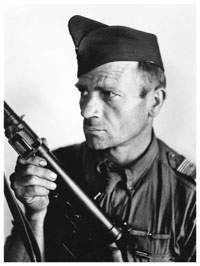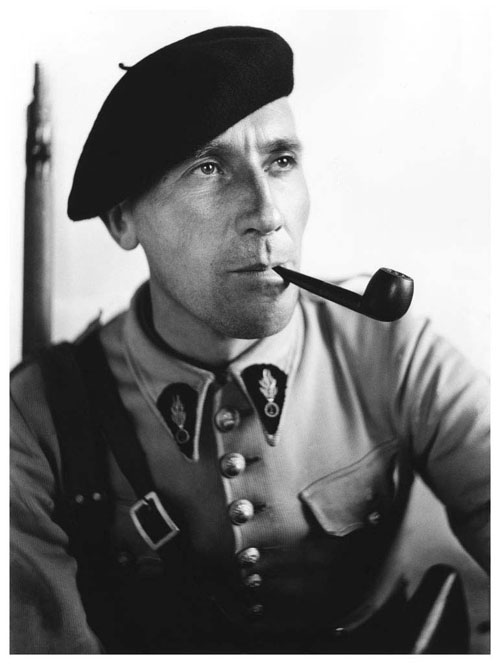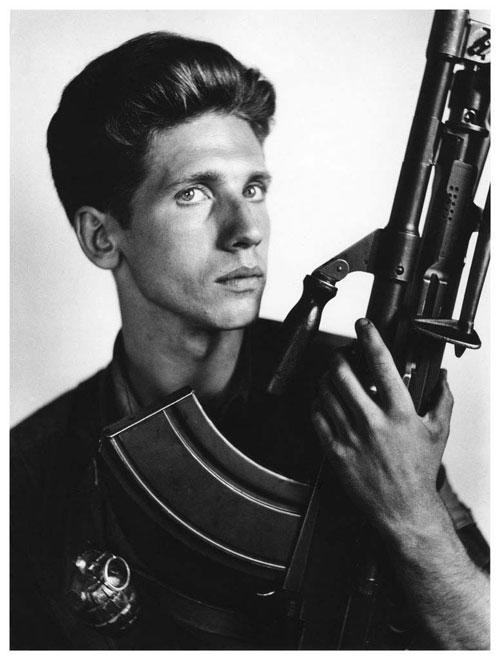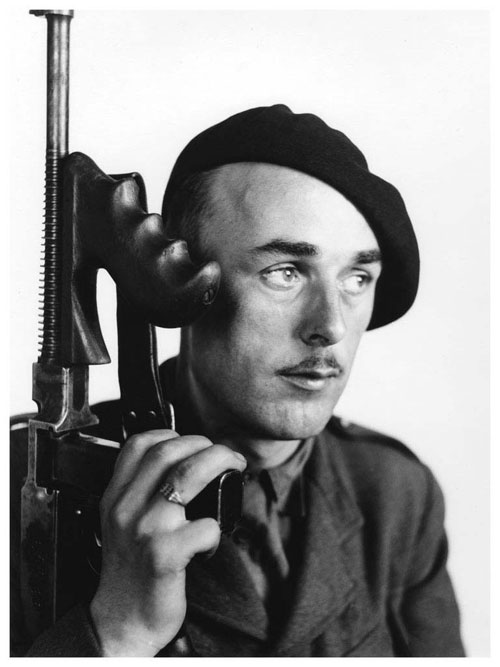Striking portraits of French Resistance fighters reveal early studio lighting techniques
posted Wednesday, August 1, 2012 at 9:37 AM EST
 A set of 11 photos of French Resistance fighters that you can view in their entirety here (with some interspersed throughout this story) is a remarkable record of the Second World War and the men and women who fought in it.
A set of 11 photos of French Resistance fighters that you can view in their entirety here (with some interspersed throughout this story) is a remarkable record of the Second World War and the men and women who fought in it.
For most of us, that was a war we have long forgotten. Despite films like “Saving Private Ryan” it is hard, for Americans especially, to understand the destruction and the deprivation experienced across Europe and South Asia.
The portraits of the Resistance fighters are beautifully done, black-and-white studio shots. They were probably taken by another member of the Resistance, for the fighters to send home to their families.
The photographer Robert Doisneau (who I wrote about back in April) took photos of many of these underground warriors too, often photographing them for forged identity papers.
The photographs of the French Resistance fighters are studio shots taken with a large or medium format camera, something like a 4x5 Speed Graphic, perhaps.
They are likely lit, as most studio photographers did in those days, with two electric floodlights. The lighting in these photos varies a bit but most are done in a lighting configuration studio photographers call “narrow" lighting.

In this arrangement, the left light is farther from the subject than the other light, which is often placed over and behind to the subject right. The result is an image where the front of the face is darker than the rest of the face.
It was as popular lighting design used in Hollywood at this time for publicity pictures of the stars. The lighting narrows the face and add a sense of drama to the image.

The memory of WWII is still strong where I live in Southern France. Each year on November 11th, we remember the men and women we lost and after a simple, solemn ceremony we gather at the community center to chat and have a light brunch.
Invariably the conversation turns to the Resistance fighters, the Maquis as they were called in these rural parts of France. People talk about how the German Army had stolen everything people had. Hunger was strong but so was the Resistance. They blew up supply trains and harassed the Germans, and many of them died.

One who survived the war, was a neighbor of ours, M.Georges, who I met a few years ago, when he was well into his 90s and confined to a wheelchair. He had fought with the underground and was captured by the Nazis.
Thrown into a camp, he kept breaking out and getting recaptured. Once, when I asked him about his many escapes, he just laughed and said, “Escapes? What escapes? We weren’t running away. We were just looking for a good restaurant.”
I did a short video (below) of M.Georges at the November 11th ceremony, just weeks before his death.